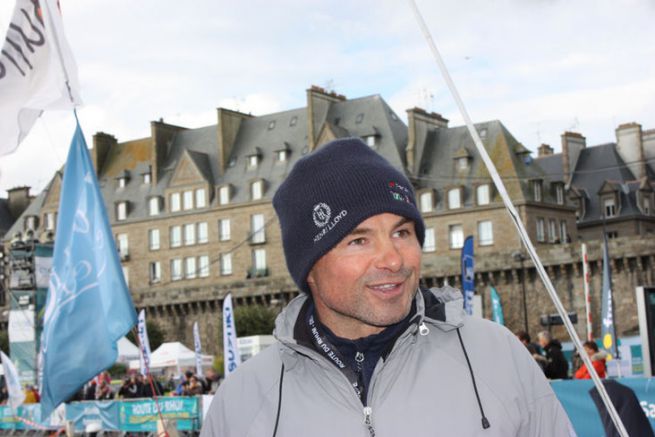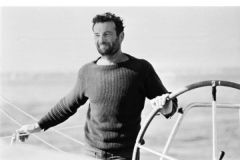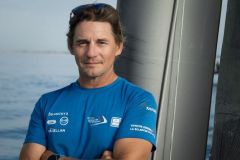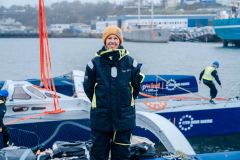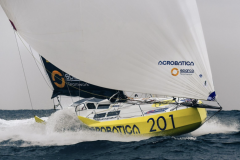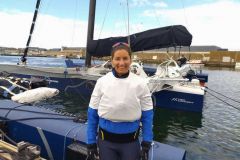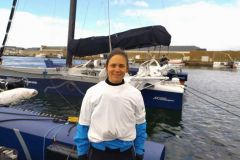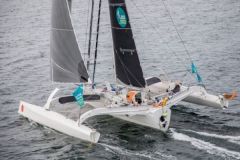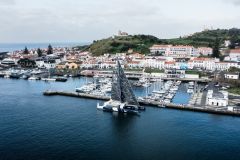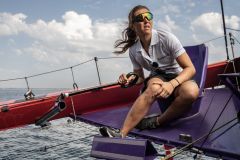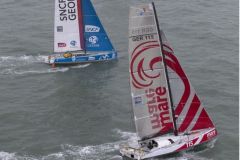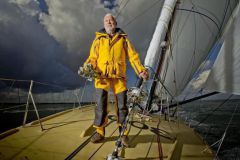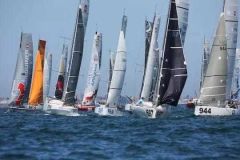As the defending champion, what is the objective for you on this rum road?
There are several: arrive on the other side, and make a doublet: win! But for that to happen, you have to arrive first.
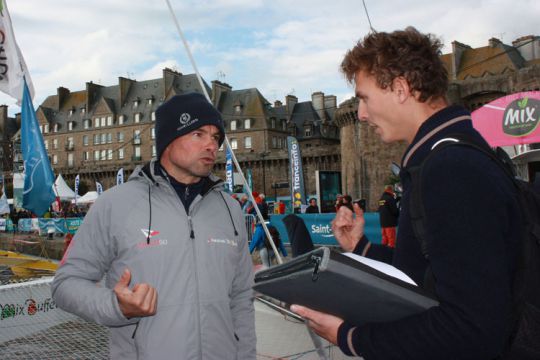
You have a 2009 boat. There are more recent boats on the Multi50 class. How do you make it evolve so that it remains efficient?
For a boat to last this long, and to continue to make results like we had this year, we have to make it evolve. Today we are the only boat in the class to have hooked everything on the mast: mainsail hook, gennak' hook, all the headsails are hooked. It allows a better tension. Today we have evolving mainsail materials, we are on 3Di (for North) or DFI at Incidence. They are much stiffer materials and with a halyard you have a lot of rendering and elasticity. Now, when you take a "rise" all the efforts are sent back to the hooks.
With foils, we also have a lot more safety and stiffness, but as a result all the external devices start to fail. This is one of the reasons why we broke our gennak' halyard on the Jacques Vabres Transat last year. It cost us first place.
We invested last winter in a drift, it's the same as on the last boats, not much lighter, it's even a little heavier than the old one, but much stiffer so it gives back a lot more power to the boat.
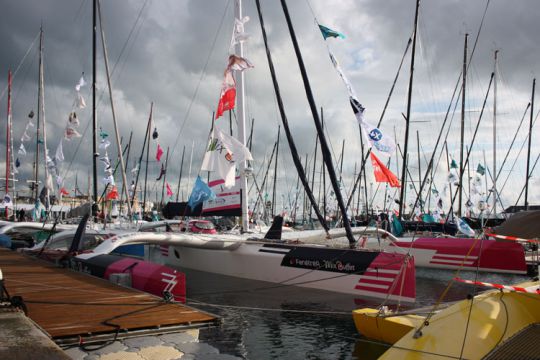
After that, it's just a few things: the pilot has evolved, we have invested a lot in the navigation centre.
These are the 3 major elements that have made the boat evolve. Today, we are arriving at a boat that is generally performing well and that manages to stay at the same level as the others.
There are also smaller, less visible things: the cables of the standing rigging were changed to reduce the diameter, which reduced the air drag because the materials evolved, we switched to Dyneema SK99.
With the power plant, we can record data that we didn't have before by adding a lot of sensors on the boat that improve the performance of the sails. We have a foil rake sensor, drift height sensors... everything is recorded. We can take out the data and say "there we sailed rather well when we were measured at 20% drift, foil at full speed and rake at 2°". It's little things like that that make it easier for the future or even for a new boat.
All this is thanks to the partners and owners who continue to invest in the boat and keep it at the top level.
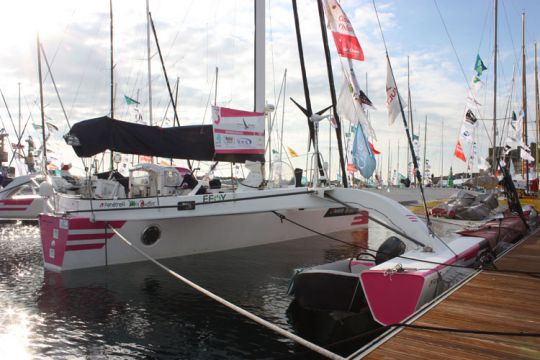
Is there still room for manoeuvre and possible development?
We still have a lot of ideas! We're at the end of a cycle, so we don't really know what's going to happen next year, but someone who would buy the boat today will have to change the rudders - they're original. If we switch to rudders similar to the last boats to be brought out in autoclave, we will gain in stiffness and transformation of the speed and what the boat delivers in performance.
There is still room for improvement in piloting, there are sails to develop...
How do you manage your time on the boat?
I have a helm station with a removable seat. The leeward seat I remove it to use it as a watch seat in the "verandah". At the helm station, I have access to my trolley adjustment that I can take back to the cockpit. For the Route du Rhum 2018, I have specially fitted out an additional protection. Because the little comrades are a little upset, they're going to steer a lot. You're going to have to cross a little more so it protects me a little bit from karcher. But I only spend time at the helm when the sea conditions are a little rough and the pilot has trouble steering. In practice, this is only 20 to 30% of the time. The rest of the time, the boat is under pilot and I am in the seat in the verandah with all the sheets within reach (for emergency release, not for adjustment) and the anti-slip systems (NDLR: at a certain angle of heel, there is a small pusher in the cleat that releases the sheet).
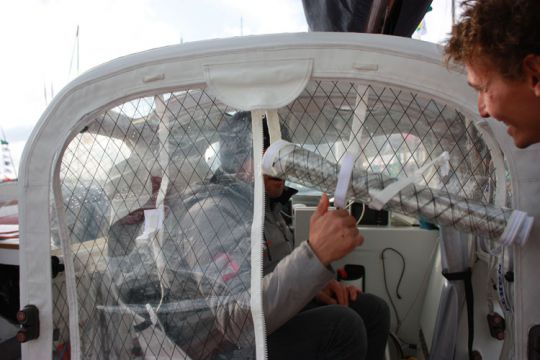
On the verandah, I have the visual on an iPad that sends me the information from the computer. I can talk to my routers... I have my pilot control at hand and I can close to sleep if it is cold.
When the conditions are really very stable, I can spend some time indoors to sleep and lie down. I sleep between 10 minutes and 25 minutes. 10 minutes for the first 24 hours in the Channel and when you are on the left of the Ushant sea route and towards Cape Finisterre. If you are on the right, you can go to 20 minutes there because there are no more fishermen. There are only a few cargo ships, but the AIS manages these crossings, we put the alarms 10-15 miles away and that's it.

To get inside, you stand at the bar, throw your feet down and put them on both side ladders and it goes down by itself.
When the conditions are rather soft, the gear is advanced, you can see the water packs on the shelves up there and as soon as we get to a bit of reaching speeds, the gear is tilted to the rear. I spend a lot of time at the bottom of the descent because I'm ready to go out, I can put a sheet that comes from outside to shock quickly. To port the galley, and to starboard all the electronics with my computer: my nav', my means of communication, my data recordings, my navigation system..
The front part is pretty reserved for when I need to change. This is the "dry" side of the boat. To sleep I take the mattress that I put in the bottom and I lie on it, always in the idea of being ready to go out.
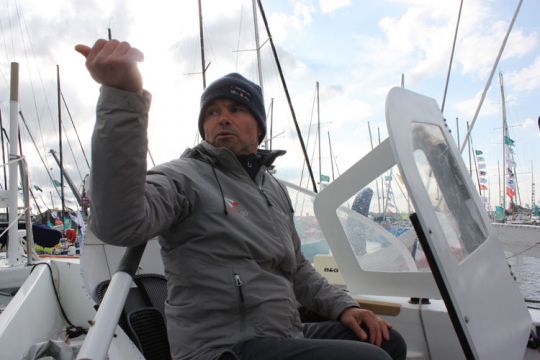
Are you still learning things on this boat despite your track record?
Life is an eternal learning experience. The fact of having put the foils on has given the boat a boost, we are relearning other things, we have other sensations, we are trying to find other small systems. The apparent wind angles are much more closed, so the sail shapes necessarily change
What will be the difficulties of the route on this Route du Rhum?
The difficulty is ourselves. On D-3 it is possible to lose the Route du Rhum. You have to put yourself in the bubble at D-3 and don't lose energy, don't empty the sleep tank. And then on the race, there will be survival modes, race modes, attack modes. These modes will have to be managed. Put them in the right place at the right time. You have to arrive on the other side, so don't break any equipment, find the right angles to the sea and make the boat go fast without it hitting too hard. It is this binder that must be found to pass between the logs, between the low pressure fronts and the cross seas. That's what will get us to the other side in good shape and I hope in good position.
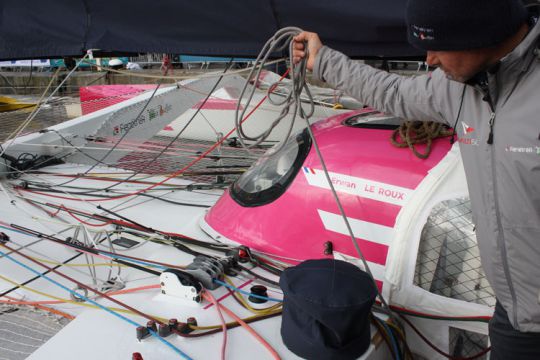
What is the best memory you have of a Route du Rhum?
I had the chance to win four years ago. I had a fantastic arrival. That's my best memory!
I hope to live others on this edition.
I have other very fond memories. I was a trainer in 2002, it is also a significant moment for me. Already because it was the first, I accompanied Marc Guillemot on the Trinitaine. He finished second behind Michel Desjoyaux despite the hecatomb that there was in ORMA: 18 boats at the start, 3 at the finish. Marc crosses the finish line with the green solent, marked Groupama with which Franck had capsized on the first night. It had a completely black carbon link arm repaired in the Azores. It shows what happened between the two. It's just incredible.
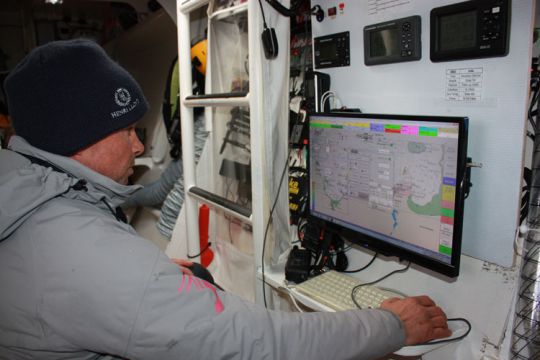
How would you describe the Route du Rhum in two words?
It's our "solo sprint". In multi 50 it is important, it is the end of a cycle. It is our flagship event, our Olympic Games.
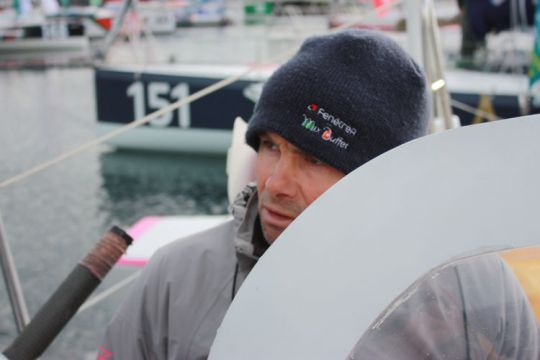
What is the programme after the Route du Rhum?
There is what we know and what we don't know. What I do know is that I'm with Spindrift for this winter's Jules Vernes trophy. I hope they don't leave and wait for me. They're going to stand by pretty quickly now. I will be at their disposal from 18 November.
Then there are things we don't know. I know that the boat is for sale so it will change hands, but I don't know if I will still be the skipper. What will happen with my partners? FenetréA stops, Mix Buffet we don't know yet. We'll see about that after the rum.
